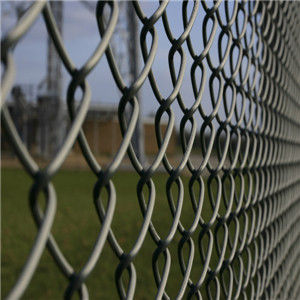Topic #1 – Before the Web
 Scientists and engineers stopped using the term ARPANET in the late 1970s. But even after they called it the Internet, the whole idea of regular people using the Internet sounded crazy. There was a big risk in letting average people have access to information that they didn’t always understand. So for about 10-15 years, the only people using the Internet were the super intelligent scientists, engineers, teachers, students, government agencies, and military professionals. A few other groups outside of ARPA built other networks, like USENET and ALOHANET, but the Internet was the leader.
Scientists and engineers stopped using the term ARPANET in the late 1970s. But even after they called it the Internet, the whole idea of regular people using the Internet sounded crazy. There was a big risk in letting average people have access to information that they didn’t always understand. So for about 10-15 years, the only people using the Internet were the super intelligent scientists, engineers, teachers, students, government agencies, and military professionals. A few other groups outside of ARPA built other networks, like USENET and ALOHANET, but the Internet was the leader.
Unfortunately, there was one major problem. Having a lot of important information available on the Internet meant that if someone got unauthorized access to the Internet, they could either steal that information, or disrupt its flow. And this led to the introduction of hackers.
Hackers are defined as anyone who uses a computer to gain access or cause a disruption to the flow of information. One of the most famous hackers in history is now a teacher and professor at MIT. In 1988, when the Internet was growing popular, but the World Wide Web had not yet been created, a man by the name of Robert Tappan Morris sent a “worm” through the network to expose its weaknesses. He got into a lot of trouble with the government, but he proved a very important point: Transmission Control Protocol was never designed with security in mind.
Remember that TCP/IP was the set of rules, created by Vinton Cerf, that broke up big files into smaller packets, sent those packets across different routes of the Internet, and made them arrive at a final destination known as an IP Address. This is what Mr. Morris was testing.
Topic #2 – Ten Packet Demo
One student will be given 10 packets containing 10 words that will be reordered and written on the board by another student on the other side of the classroom. Each of the other students will serve as part of the route those packets can pass along. When all of the packets arrive and the words are written in their correct order, the class should be able to see how easy it is for a hacker to manipulate a route as well as the packets.
Topic #3 – How They Do It
Have you ever heard the words “virus” or “worm” or “trojan horse”? All of these are examples of things that hackers use either to steal information or disrupt the flow of information. All of it together is known as “malware” or “malicious code” that gets attached to one packet from a single file. Hackers can simply wait for the right moment to snatch a traveling packet out of the network, attach malware, and then put it back into the network so that it arrives at its final destination. All of these examples are called “malware” or “malicious code” because they have a devious or misleading purpose. This is why it’s so important for your computer to have an Anti-Virus program like Norton or McAffee that can “sniff” out incoming packets for malware before they are accepted on your computer while you are connected to the Internet.
Below is an example of how a single packet can be followed, tracked, and hacked.
Topic #4 – And Then the Web Showed Up
 During those 1980s, while the Internet was still only used by really smart people, one of the biggest challenges of sharing information is that everyone shared it using different formats. Today, you might think about sending someone a Microsoft Word document or a PDF, but back in those early days, everyone used something different to present their information. And this is where Tim Berners-Lee showed up, on August 9, 1991, and shared a new space called the World Wide Web, where people could write all their information into documents written with a common language that he called the Hypertext Markup Language, or HTML. If everyone wrote their information with HTML, then it would be easier to communicate. And he was correct. HTML quickly became the standard for all communication across that space known as the World Wide Web.
During those 1980s, while the Internet was still only used by really smart people, one of the biggest challenges of sharing information is that everyone shared it using different formats. Today, you might think about sending someone a Microsoft Word document or a PDF, but back in those early days, everyone used something different to present their information. And this is where Tim Berners-Lee showed up, on August 9, 1991, and shared a new space called the World Wide Web, where people could write all their information into documents written with a common language that he called the Hypertext Markup Language, or HTML. If everyone wrote their information with HTML, then it would be easier to communicate. And he was correct. HTML quickly became the standard for all communication across that space known as the World Wide Web.
But of course, as we already discussed, information was still at risk. And if more people were writing that information into HTML pages, that meant more and more information was easy for hackers to find if they wanted. Hackers were no longer just tracking random files across the Internet. Now all they had to do was track HTML files that were traveling across the Web. In other words, while the World Wide Web was to become a very important resource of information, the fact that such information was easy to find with coded pages, hackers could just grab a few HTML files and destroy an entire website.
This new development, known as the World Wide Web, is something we’ll study much more closely in the last few weeks of the semester.
 After scientists and engineers agreed to call the ARPANET the “Internet,” it was still a few years before most people had personal computers. These were the 1980s. Microsoft and Apple were fighting to produce the best, most popular, and most affordable computers. But the introduction of personal computers, especially those connected to the Internet, led to a new problem: hackers.
After scientists and engineers agreed to call the ARPANET the “Internet,” it was still a few years before most people had personal computers. These were the 1980s. Microsoft and Apple were fighting to produce the best, most popular, and most affordable computers. But the introduction of personal computers, especially those connected to the Internet, led to a new problem: hackers. Scientists and engineers stopped using the term ARPANET in the late 1970s. But even after they called it the Internet, the whole idea of regular people using the Internet sounded crazy. There was a big risk in letting average people have access to information that they didn’t always understand. So for about 10-15 years, the only people using the Internet were the super intelligent scientists, engineers, teachers, students, government agencies, and military professionals. A few other groups outside of ARPA built other networks, like USENET and ALOHANET, but the Internet was the leader.
Scientists and engineers stopped using the term ARPANET in the late 1970s. But even after they called it the Internet, the whole idea of regular people using the Internet sounded crazy. There was a big risk in letting average people have access to information that they didn’t always understand. So for about 10-15 years, the only people using the Internet were the super intelligent scientists, engineers, teachers, students, government agencies, and military professionals. A few other groups outside of ARPA built other networks, like USENET and ALOHANET, but the Internet was the leader. During those 1980s, while the Internet was still only used by really smart people, one of the biggest challenges of sharing information is that everyone shared it using different formats. Today, you might think about sending someone a Microsoft Word document or a PDF, but back in those early days, everyone used something different to present their information. And this is where Tim Berners-Lee showed up, on August 9, 1991, and shared a new space called the World Wide Web, where people could write all their information into documents written with a common language that he called the Hypertext Markup Language, or HTML. If everyone wrote their information with HTML, then it would be easier to communicate. And he was correct. HTML quickly became the standard for all communication across that space known as the World Wide Web.
During those 1980s, while the Internet was still only used by really smart people, one of the biggest challenges of sharing information is that everyone shared it using different formats. Today, you might think about sending someone a Microsoft Word document or a PDF, but back in those early days, everyone used something different to present their information. And this is where Tim Berners-Lee showed up, on August 9, 1991, and shared a new space called the World Wide Web, where people could write all their information into documents written with a common language that he called the Hypertext Markup Language, or HTML. If everyone wrote their information with HTML, then it would be easier to communicate. And he was correct. HTML quickly became the standard for all communication across that space known as the World Wide Web. Since the beginning of the semester, we’ve been talking a lot about world history. But do you remember which events happened in which order? If you talk about these events in the wrong order, you’re mixing up that history. It works the same way when you do a puzzle. If you put the wrong pieces in the wrong places, the puzzle won’t look right and it won’t actually be complete.
Since the beginning of the semester, we’ve been talking a lot about world history. But do you remember which events happened in which order? If you talk about these events in the wrong order, you’re mixing up that history. It works the same way when you do a puzzle. If you put the wrong pieces in the wrong places, the puzzle won’t look right and it won’t actually be complete.